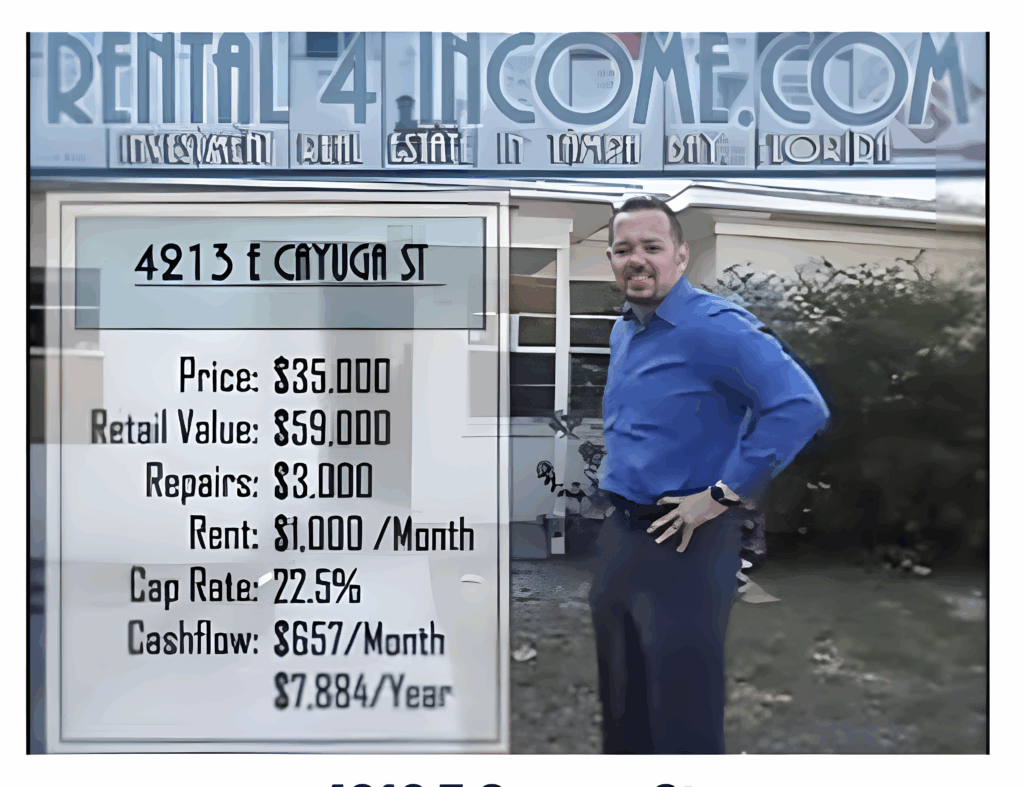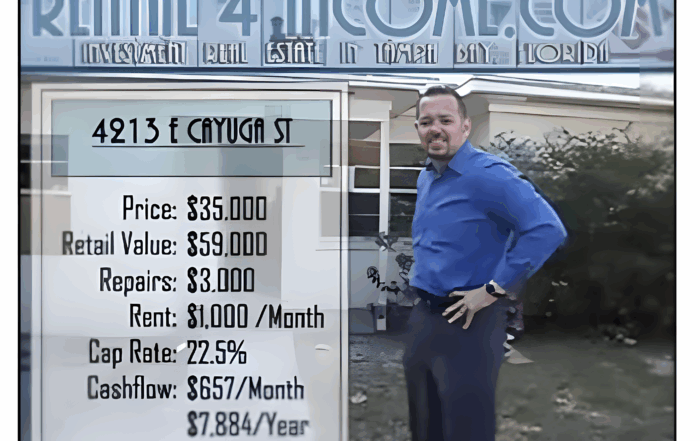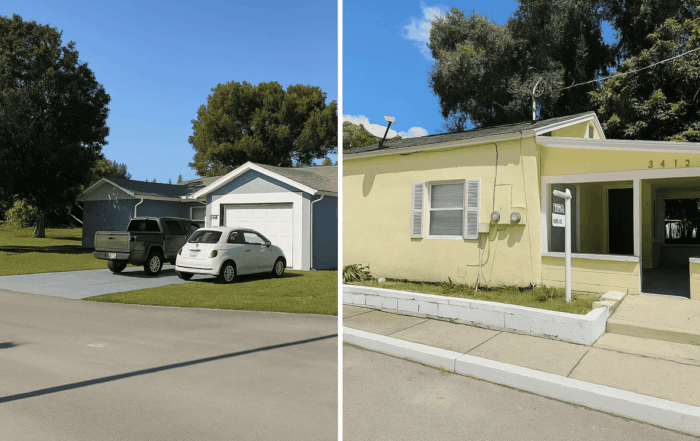Real Estate Investment Analysis: The Skill Every Investor Needs to Master
Let’s rewind 20 years.
Back when I first started in real estate investing, there were no online calculators, no plug-and-play apps, and certainly no YouTube influencers breaking down cap rates with flashy graphics. It was just you, a calculator, and whether or not you had the guts (and knowledge) to run the numbers yourself.
But I wasn’t coming in blind. Before real estate, I was a licensed financial advisor, working with mutual funds and building prospectuses for clients. My job was to understand investment vehicles, evaluate risk, forecast long-term returns, and help people protect their money.
So, when I pivoted into real estate, I brought that same mindset with me. Instead of emotional buying, I focused on real estate investment analysis—a skill that became the backbone of every successful deal I’ve made since.

2005-2006
What Is Real Estate Investment Analysis?
In simple terms, real estate investment analysis is the process of evaluating a property’s potential to make you money. It means looking at:
-
What you’ll earn (rental income)
-
What you’ll spend (expenses and financing)
-
How long it’ll take to get your money back
-
What kind of return you can expect over time
It’s the difference between guessing and knowing. And in this business, guessing will break you.
Why Most Investors Skip This (And Regret It)
Here’s the truth—most new investors skip the math. They buy based on how a house looks, what someone on Facebook said, or how hot the market feels.
But markets change. Interest rates rise. Rents fluctuate. If you don’t know your numbers, you’ll make mistakes. Painful, expensive ones.
That’s why I always say: If it doesn’t work on paper, it won’t work in real life.
The Core Metrics Every Investor Should Know
Let’s get into the actual numbers you need to run when analyzing a property.
1. Gross Monthly Income
This is your starting point—what you expect the property to bring in every month from rent. You want realistic comps here, not just what Zillow “thinks” it could rent for.
2. Operating Expenses
You have to factor in all monthly and annual costs:
-
Property taxes
-
Insurance
-
Repairs/maintenance
-
Property management (if you use one)
-
Vacancy reserves
-
HOA (if applicable)
A good rule of thumb is to assume 40–50% of your gross income will go toward these expenses. It’s conservative—and safe.
3. Net Operating Income (NOI)
NOI = Gross Rent – Operating Expenses
This number tells you how much income the property generates before paying the mortgage. It’s a key number for comparing potential deals.
4. Cap Rate
Cap Rate = NOI ÷ Purchase Price
Cap rate helps you measure a property’s profitability regardless of how you finance it.
Generally:
-
6–8% = solid in stable markets
-
8–10%+ = strong in emerging or riskier areas
It’s not perfect, but it’s great for apples-to-apples comparisons.
5. Cash Flow
Cash Flow = NOI – Mortgage Payment
This is the money you pocket each month after everything is paid. If this number is negative, you’re subsidizing the property—aka, not investing.
6. Cash-on-Cash Return
Cash-on-Cash = (Annual Cash Flow ÷ Total Cash Invested) × 100
This metric tells you how fast your invested cash is working for you. If you invested $50K and are making $5K per year, you’re earning a 10% cash-on-cash return.
The higher this number, the faster you’re getting your money back.
7. Total Return
This is where the real magic of real estate kicks in. Your total return includes:
-
Cash Flow
-
Loan Paydown (equity)
-
Appreciation
-
Tax Benefits (like depreciation)
Even if a property only cash flows a few hundred bucks a month, you might still see 15–25% total return when all factors are included.
Real Estate vs Mutual Funds: What I Learned
As a former financial advisor, I used to compare mutual fund performance side-by-side—fees, historical returns, volatility, you name it.
When I brought that lens to real estate, I realized something powerful: a single rental property, when purchased right, can outperform many managed funds—and with more control.
In mutual funds, you don’t get to negotiate the price. In real estate? You do.
In mutual funds, your cash flow is minimal. In real estate? You could cash flow every month.
In mutual funds, taxes are what they are. In real estate? You have write-offs, depreciation, and 1031 exchanges.
Once I understood that, I was hooked—and I knew that every property needed to be analyzed like a portfolio asset. Not a house. Not a project. An asset.
The Spreadsheet Is Your Friend
I didn’t start with apps. I started with spreadsheets. I built my own models—simple at first, then more advanced.
And here’s the truth: you don’t need complicated tech to do this. You need:
-
A spreadsheet or notebook
-
A clear list of expenses
-
Realistic rental comps
-
And discipline to stick to the numbers
I still use custom-built spreadsheets for every deal. Why? Because I trust my process. I don’t care how pretty a calculator looks—if it doesn’t include all the right inputs, it’s just a shiny trap.
What Makes a Deal “Good”?
Every investor has different goals, but here’s what I look for:
-
Positive cash flow from day one
-
At least 10% cash-on-cash return
-
Cap rate over 6% in stable areas, 8–10% in higher-risk neighborhoods
-
Room for appreciation or forced equity
-
A strong exit strategy
If a deal can’t hit these marks—or if the numbers only work under perfect conditions—it’s a pass.
The Exit Strategy Mindset
Another overlooked piece of analysis? The exit plan.
When I analyze a deal, I ask:
-
Can I refinance this in the future?
-
Can I sell it with a profit if needed?
-
Can I convert it to short-term or mid-term rental if the long-term market shifts?
Don’t just buy a deal—buy options.
That’s how you stay flexible, especially in unpredictable markets.
The Real Reason People Avoid the Numbers
Let’s be honest: a lot of people avoid analysis because they don’t want to know the truth.
They want to believe it’s a good deal. They want to say they “own investment property.”
But this game isn’t about ego—it’s about income.
Running the numbers takes humility. It means being okay with saying no.
But every “no” clears the path for the right “yes.”
How to Get Good at This (Even If You’re Just Starting)
You don’t need a finance degree. You just need a few reps. Start analyzing properties every day—even if you’re not ready to buy.
Try this:
-
Grab three listings in your market
-
Find the rents for each
-
Estimate expenses (use 40–50% of rent if you’re unsure)
-
Calculate NOI, cash flow, and cap rate
-
Ask: would I buy this?
Do that daily for 30 days, and you’ll already be ahead of most “investors” out there.
My Rule: If I Can’t Explain the Math to a 10-Year-Old, I Don’t Buy It
That’s my filter. If the numbers don’t make sense quickly and clearly, the deal is probably a mess in disguise.
I don’t do mental gymnastics. I don’t assume best-case scenarios. I stick to math, not emotion.
That’s what’s kept me in this business over the years. That’s what helped me build a portfolio. And that’s what I teach every investor I mentor.
Final Thoughts: Real Estate Investment Analysis Is the Foundation
You can paint walls, update kitchens, and negotiate like a champ—but if you don’t understand real estate investment analysis, you’re playing a dangerous game.
When the market shifts—and it will—only the investors who ran the numbers will stay standing.
So don’t wait for perfection. Just start:
-
Learn the formulas
-
Analyze deals every day
-
Track your mistakes
-
Stick to your criteria
It’s not about finding the perfect deal. It’s about building the perfect process.
Because when you get the analysis right, everything else falls into place.
Keep it consistent, stay patient, stay true—if I did it, so can you. This is Jorge Vazquez, CEO of Graystone Investment Group and all our amazing companies, and Coach at Property Profit Academy. Thanks for tuning in—until the next article, take care and keep building!
If you’d like to connect directly with me, feel free to book a time here:
👉 https://graystoneig.com/ceo
Pick your expert. Book your free 15-minute consult now. We are here to help!
Our Top Articles
How I Qualified Tenants for Lease Options in 2005 (And Why It Still Works in 2025)
How I Qualified Tenants for Lease Options in 2005 (And Why It Still Works in 2025) Let’s rewind to [...]
Real Estate Investment Analysis: The Skill Every Investor Needs to Master
Real Estate Investment Analysis: The Skill Every Investor Needs to Master Let’s rewind 20 years. Back when I first [...]
How I Closed Two Subject-To Deals Using Almost No Cash
How You Closed Two Subject-To Deals Without a Bank, a Credit Pull, or a Stack of Cash Focus keyphrase: [...]
Property Profit Academy:
✔ Learn to buy properties with little to no money down.
✔ Build a $10M portfolio step by step.
✔ Master strategies like BRRRR and house hacking.








